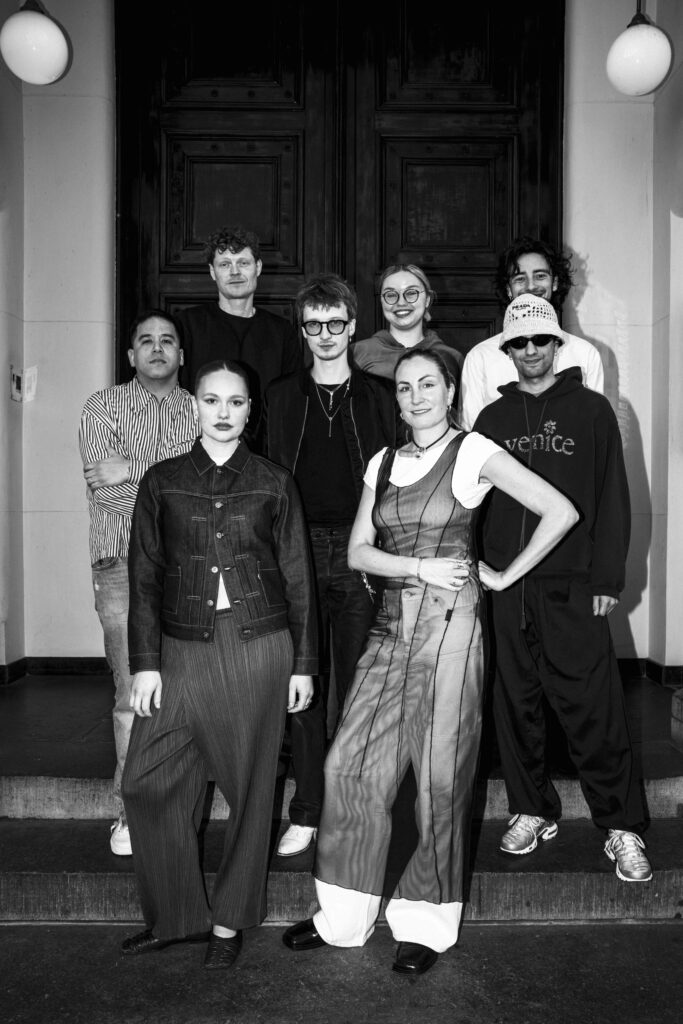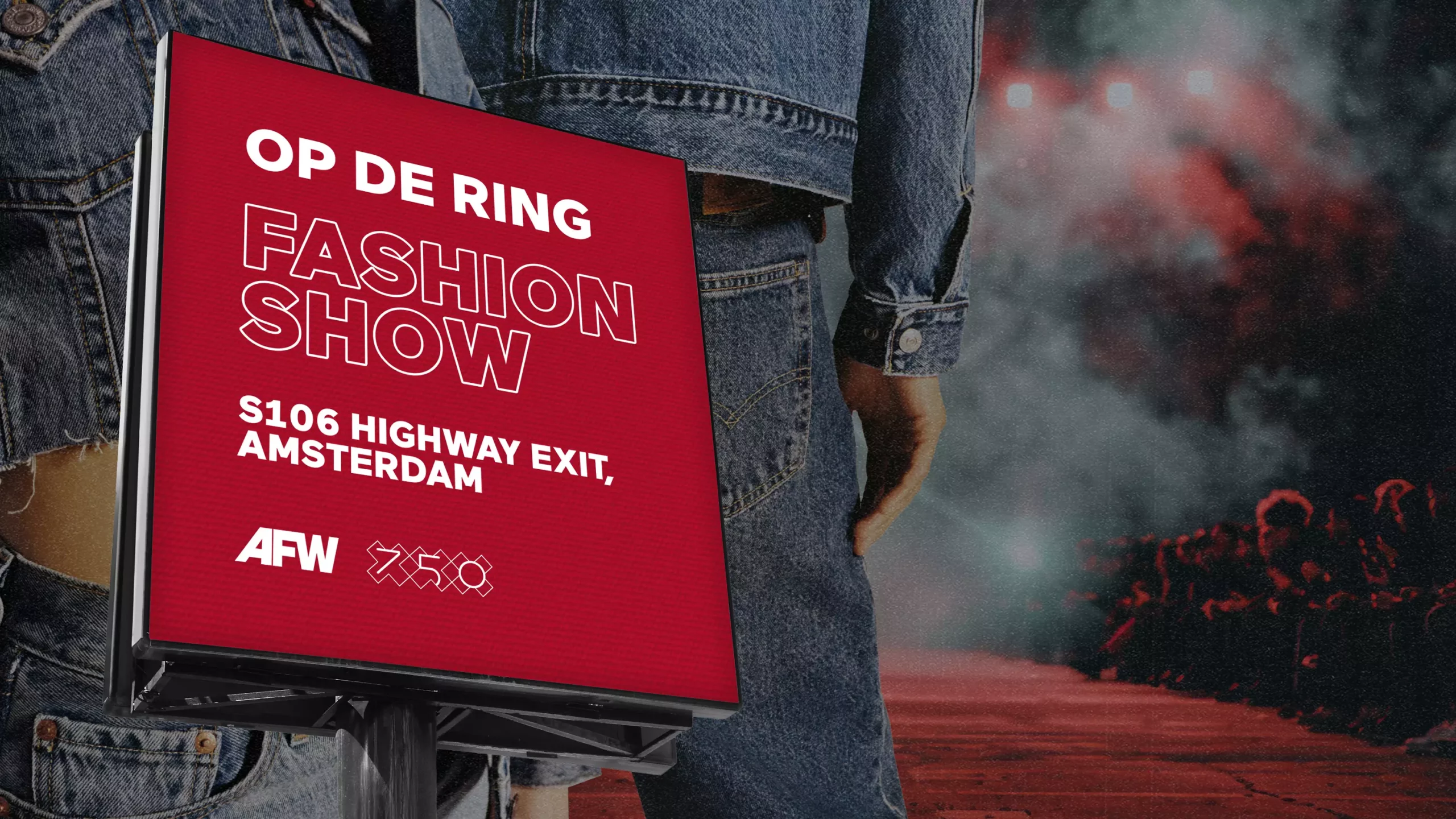As the official partner of Show Op de Ring, Levi’s® plays a central role in shaping the visual and conceptual foundation of this landmark runway. For the occasion, all participating designers were given access to repurposed Levi’s® denim, a material steeped in heritage, yet open to reinvention. In this interview, Levi’s® shares their perspective on partnering with a new generation of creatives, the power of denim as a storytelling medium, and why a fashion show on the A10 couldn’t be more timely.
Why did Levi’s® decide to partner with Amsterdam Fashion Week and the Op de Ring project specifically? What drew you to this initiative?
Amsterdam Fashion Week and the Op de Ring project represent a bold, forward-thinking approach to fashion that really resonated with us. We’re especially excited to collaborate with a diverse group of emerging talents whose creativity and vision embody the spirit of innovation and authenticity we stand for. Their fresh perspectives bring energy and originality to the project, helping us celebrate not just fashion, but also culture and community.
What makes this project, a runway on the A10, unique or significant from your perspective as a heritage brand?
As a brand with deep roots in cultural movements and communities standing for progress, the runway on the A10 speaks directly to Levi’s® history of challenging convention. It’s a powerful visual metaphor — turning a ring road into a circular runway — and aligns perfectly with our ambitions around circular design. It’s also uniquely urban and democratic, which is what Levi’s® has always stood for. It’s about making space for new voices and rethinking where and how style is expressed.
Additionally, this initiative coincides with the celebration of Amsterdam’s 750th anniversary a milestone that honours the city’s rich history and vibrant cultural tapestry. By participating in Op de Ring, we’re proud to contribute to this momentous occasion, highlighting Amsterdam’s role as a dynamic hub for creativity, inclusivity, and sustainable progress.
For the Op de Ring show, emerging designers are working with Levi’s® repurposed denim. Can you tell us more about this inventory, where it comes from, and why it’s important to give it a second life?
The denim used by the designers comes from unsold inventory, returns, and samples from past seasons. Instead of letting these garments go to waste, we see them as raw materials for new creativity. Giving them a second life not only reduces textile waste but also demonstrates the versatility and enduring value of Levi’s® denim. It’s a tangible expression of our commitment to circularity and reducing our environmental impact. There will also be some denim fabric used for the outfits, which further expands the creative possibilities and strengthens the narrative of transformation and reuse within the project.
Levi’s® has long been associated with durability and timelessness. How does this project reflect your commitment to circularity and innovation?
This project puts our values into action. Circularity is about more than recycling — it’s about designing with longevity, creativity, and regeneration in mind. By inviting designers to rework our denim, we’re opening the door to new ways of thinking about fashion’s lifecycle. It’s both a celebration of durability and a push toward innovation.
What excites you most about the way these young designers are reinterpreting Levi’s® denim for the runway?
Their perspectives are fresh, fearless, and often deeply personal. They don’t treat denim as something static — they stretch it, reshape it, and tell new stories with it. That energy is exciting for us as a heritage brand because it shows that Levi’s® can keep evolving without losing its soul.

How does supporting emerging talent fit into Levi’s® wider creative or cultural strategy?
We believe that the future of fashion depends on the voices we amplify today. Supporting emerging talent isn’t just a nice-to-have — it’s a core part of how we stay culturally relevant and creatively vibrant. Whether it’s through collaborations, grants, or platforming new voices, we’re committed to fostering the next generation of designers and change makers.
Are there any specific design elements or ideas from the Op de Ring collections that particularly stood out to you?
Absolutely — we’ve seen incredible ingenuity, from modular denim pieces to zero-waste patchwork techniques. Some designers played with scale and silhouette in unexpected ways, while others embedded strong social and cultural narratives into their work. What stood out most was the sense of purpose behind each design — these pieces weren’t just beautiful, they meant something.
